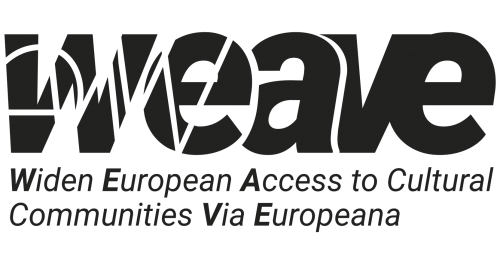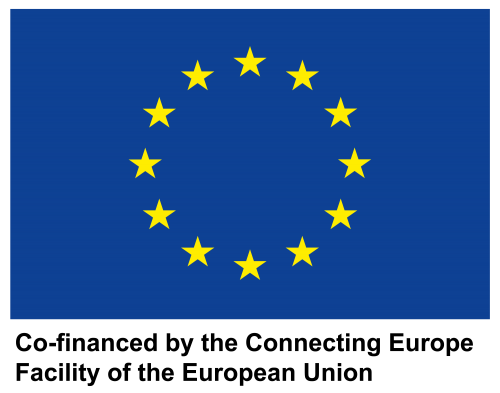ERIAC JOINS THE EUROPEAN PROJECT “WEAVE – Widen European Access to cultural communities Via Europeana”
ERIAC is proud to announce being part of the WEAVE – Widen European Access to cultural communities Via Europeana project!
This project aims to develop a framework to link cultural communities’ tangible and intangible heritage, safeguarding the rich and invaluable cultural heritage they represent.
WEAVE will contribute to preserving for future generations the richness of the European identity and its cultural plurality. In particular, the project will aggregate over 5,200 new high-quality records to Europeana related to the rich and invaluable cultural heritage of minority cultural communities, and showcase these collections in a set of engaging editorials on the Europeana website.
The project will carry out several capacity-building activities to develop a closer connection between cultural heritage institutions (CHIs), minority cultural communities and Europeana. It will offer training, mentorship, and guidelines to properly handle immaterial cultural heritage and work with vulnerable and marginalised communities.
Additionally, WEAVE will build upon the results of CultureMoves and 50sKaleidoscope Generic Services Projects. It will develop open and reusable tools that will employ a mix of AI, machine learning, natural language processing, big data analysis, and innovative interface engineering. The toolkit will allow the management of annotations, semi-automatic recognition of specific gestures and movements and visualisation of performances and 3D models.
Furthermore, the project will demonstrate how the WEAVE Toolkit can be used by CHIs to better promote collections that would otherwise remain hidden, in educational and destination tourism contexts.
Tasks
Cultural communities’ engagement in the age of digital CH (Lead: ERIAC)
Using and extending the participatory LabDay methodology developed by COVU in the previous CultureMoves Action (2017-EU-IA-0171), this task is responsible for involving different cultural communities connecting them to CHIs and Europeana through virtual and physical events. At least one event will be organised by each of the partners representing one of the cultural communities involved in the Action (i.e. Roma community, traditional Portuguese dance and culture, historical dance community, daguerreotype photography community, Slovenian CH community). At the end of the task, a summary of the activities will be produced in a Report on community engagement events.
Through its membership structure, ERIAC will engage content contributors to provide valuable samples of Roma tangible and intangible heritage artefacts that will be included in the Europeana collection.
The items will be selected based on the following criteria:
- relevance and/or historical importance; authenticity (produced by Roma)
- quality of digitalization (meeting the standards);
- possibility of clearing the copyrights.
ERIAC members will be invited to propose items to be included while the final selection will be supervised by ERIAC management (with experience and expertise in curating). An emphasis will be placed on contemporary objects, especially examples of contemporary art produced by Roman artists, to counterbalance the dominant folkloric/ethnographic, and often a stereotypical representation of Roma people.
This is relevant due to the following reasons:
- a dominant part of the current items in Europeana collections website labelled as “Roma/Gypsy” include items which are either produced by non-Roma (for example, ethnographic photographs of the Roma) or represent an imagined representation of the Roma (for example, works of art which fetishize/exotifies the imagined “Roma”, as a representation of an archetype/stereotype);
- contemporary artistic practice is developed by Roma people themselves, giving an authentic and subjective representation of Roma identity and culture;
- as Europeana collections website include much fewer objects of contemporary art, these newly aggregated items will provide an added value to the entire collection.
This project is a Europeana Generic Services project, and it is co-financed by the Connecting Europe Facility of the European Union.
Project partners
- IN2 Digital Innovations GmbH – Germany (coordinator)
- European Roma Institute for Arts and Culture e.V. – Germany
- PHOTOCONSORTIUM – International Consortium for Photographic Heritage – Italy
- Coventry University – United Kingdom
- CRDI – Ajuntament De Girona – Centre De Recerca I Difusió De La Imatge – Spain
- PédeXumbo – Associaçãon para a Promoção da Musica e da Dança – Portugal
- TOPFOTO – Topham Partners LLP – United Kingdom
- ARCTUR d.o.o. – Slovenia
- Universidade NOVA de Lisboa – Portugal
- Think Code Ltd. – Cyprus
- Katholieke Universiteit Leuven- Belgium
- Stichting Europeana – The Netherlands


